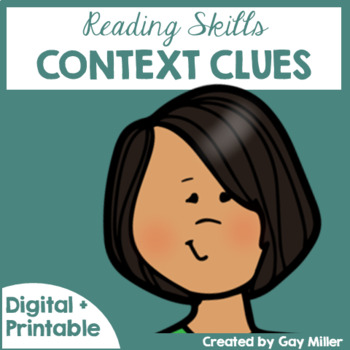Context Clues Pyramid Puzzles and Bump Game


These puzzles will help you use context clues to figure out how words relate to one another.
What do these words describe?
What do these words describe?
What do these words describe?
What do these words describe?
What do these words describe?
Objective: When all spaces on the game board are claimed, the player with the most claimed or frozen spaces wins by correctly matching definitions to their corresponding words.
Notes:
If you choose the wrong answer, the box will flash gray, and you will have another chance to try again!
Even if a box is frozen, you must interact with the gameboard to proceed.
Have students complete the pyramid puzzles as a hook activity. Before students dive into the bump game, walk through a few examples using think-aloud strategies. Highlight how to spot signal words, use surrounding sentences, and eliminate distractors. This builds confidence and gives students a mental checklist they can apply during independent practice.
"The meaning is often hiding in plain sight—teach kids to be clue detectives."
— Inspired by every teacher who’s ever said, “Read it again, but slower.”

In this blog post, you will find some fun and engaging activities that will help you teach context clues to your students.
Visit the Blog
Explore this resource for teaching context clues with both digital and printable formats. Students start with vocabulary practice and a playful “Jabberwocky” hook, then build skills through grade-leveled lessons aligned to CCSS from definitions and examples in 4th grade to tone and word function in 6th. Activities include task cards, cloze stories, sentence strips, and games like Sorry and Dots & Boxes, plus literature-based challenges using “Casey at the Bat” and “The Road Not Taken.”
Shop the Bundle on TPT